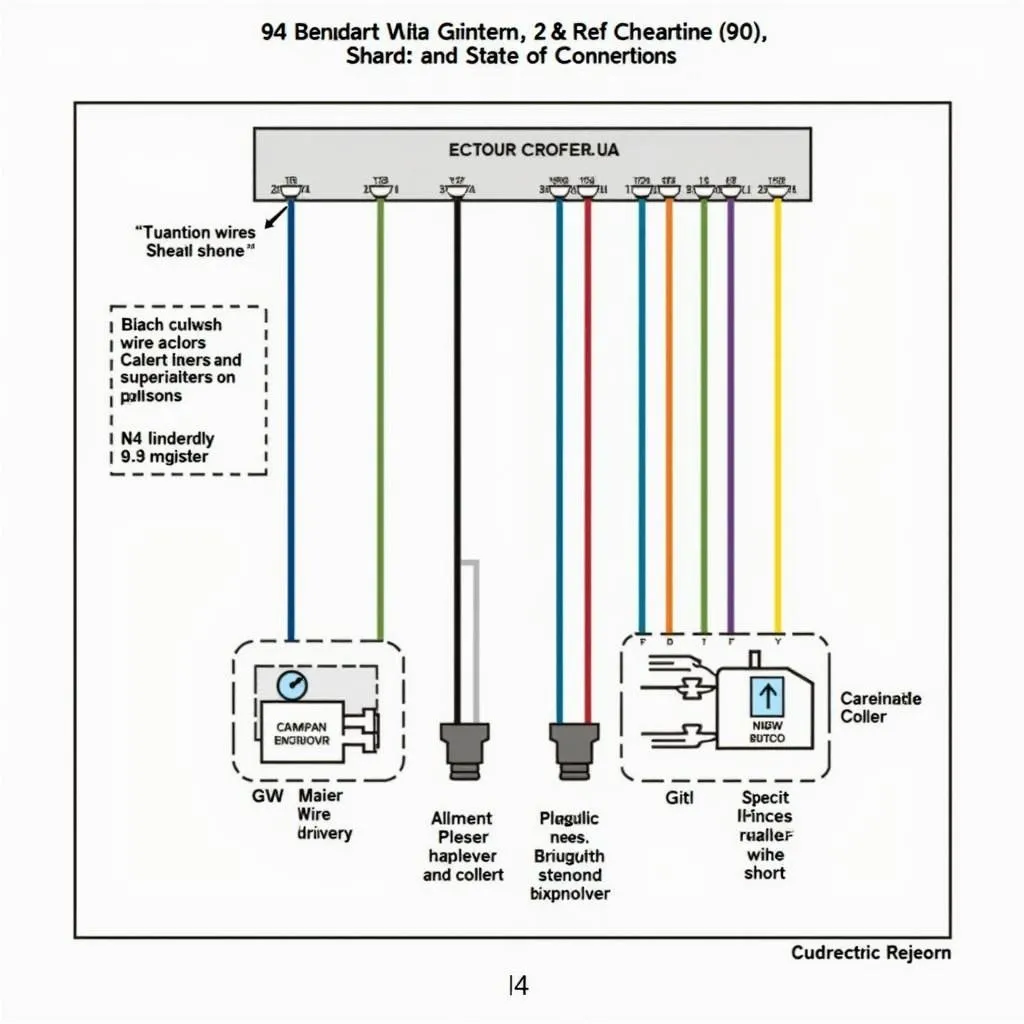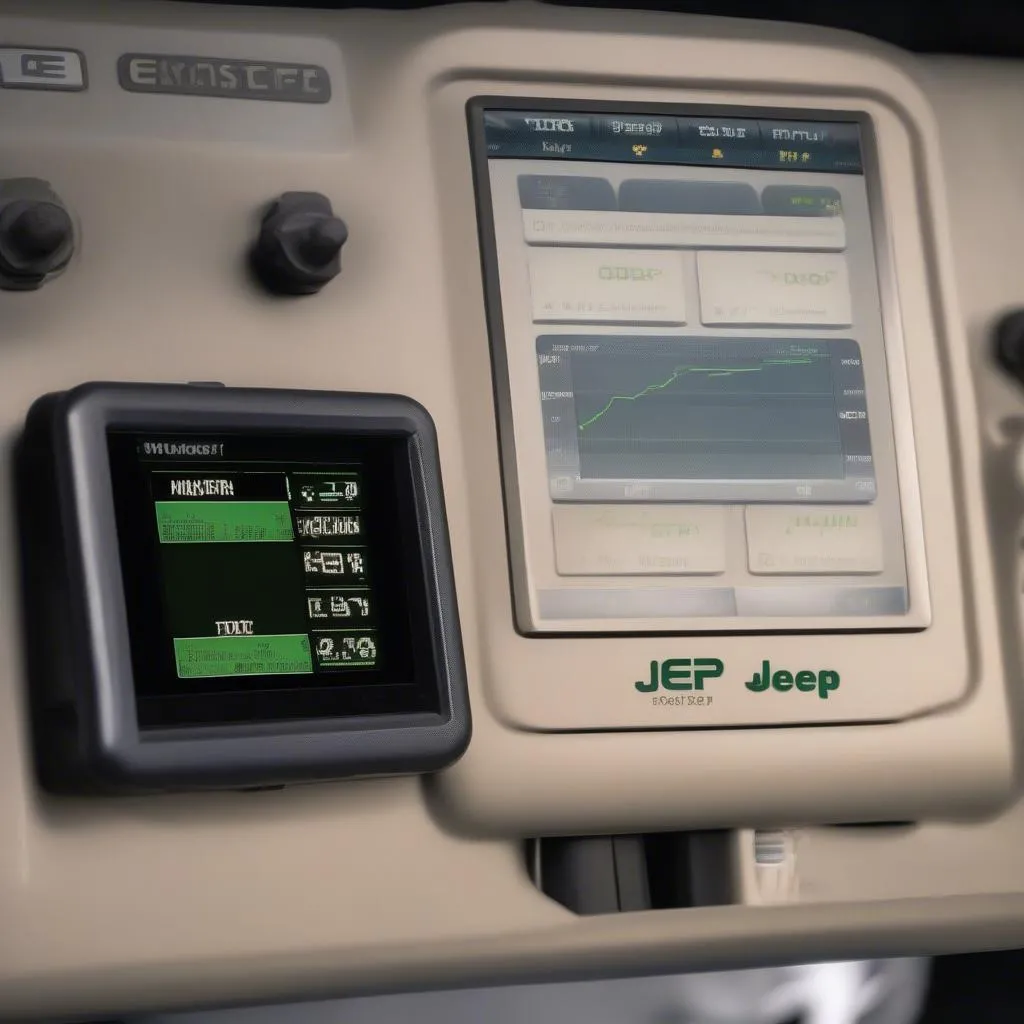Knowing your Car Radio Wiring Colors is crucial for any car audio enthusiast, whether you’re installing a new system, troubleshooting existing issues, or simply adding an amplifier. This guide delves into the intricate world of car radio wiring, empowering you with the knowledge to confidently tackle any project.
Decoding the Rainbow: What Each Car Radio Wire Color Represents
While car wiring harnesses can seem daunting at first glance, understanding the color coding system makes the process much simpler. Let’s break down the common car radio wiring colors:
Power Wires:
- Yellow: This is your constant 12V power supply, often connected directly to the battery.
- Red: This wire delivers power when the ignition key is turned to the “ACC” or “ON” position.
- Orange: Typically used for dimmer functions, dimming the radio display with the vehicle’s dashboard lights.
Speaker Wires:
- Gray and Gray/Black Stripe: These wires connect to your left front speaker (+ and -).
- White and White/Black Stripe: These connect to your left rear speaker (+ and -).
- Green and Green/Black Stripe: These power your right front speaker (+ and -).
- Purple and Purple/Black Stripe: These wires connect to your right rear speaker (+ and -).
Other Important Wires:
- Blue: Often used as a remote turn-on lead for amplifiers.
- Black: This is your ground wire and is essential for completing electrical circuits.
Note: Wiring colors can vary slightly depending on the car’s make, model, and year. Always consult your vehicle’s wiring diagram for the most accurate information.
Common Car Radio Wiring Issues and How to Fix Them
Several issues can arise from incorrect car radio wiring:
1. No Power to the Radio
- Possible Cause: Blown fuse, faulty ignition switch, or a disconnected power wire.
- Solution: Check the fuse related to the radio circuit. Inspect the ignition switch for proper function. Verify all power wires are securely connected.
2. Speakers Not Working
- Possible Cause: Blown speaker fuse, damaged speaker wires, or incorrect wiring connections.
- Solution: Check the speaker fuse. Inspect the speaker wires for any signs of damage or loose connections. Ensure the speaker wires are correctly connected to the corresponding terminals on the radio and speakers.
3. Poor Sound Quality
- Possible Cause: Ground loop issues, poor quality wiring, or incorrect speaker phasing.
- Solution: Ensure a clean ground connection for the radio and amplifiers. Use high-quality speaker wires and connectors. Verify that the positive and negative terminals of each speaker are connected correctly.
 Car Radio Wiring Diagram
Car Radio Wiring Diagram
Essential Tools for Car Radio Wiring
Tackling car radio wiring becomes significantly easier with the right tools:
- Wire Strippers: Used to remove the insulation from wires, exposing the copper core for connections.
- Crimping Tool: Used to secure crimp connectors to wires, ensuring a tight and reliable connection.
- Electrical Tape: Insulates and protects exposed wire connections, preventing shorts and ensuring safety.
- Multimeter: A versatile tool for testing voltage, continuity, and resistance in electrical circuits.
 Essential Car Radio Wiring Tools
Essential Car Radio Wiring Tools
Diagnosing and Troubleshooting with Car Diagnostic Software
Modern vehicles often integrate complex electrical systems that require advanced diagnostic tools. Car diagnostic software, such as those offered by Cardiagtech, can be invaluable in these situations. These tools allow you to:
- Read and clear fault codes: Identify the root cause of electrical issues, including those related to the car radio system.
- Monitor live data streams: Observe real-time sensor data, which can be helpful in diagnosing intermittent problems or confirming wiring connections.
- Perform module coding and programming: In some cases, car radio issues might stem from software-related problems. Diagnostic software can help reprogram or update these modules.
FAQs: Your Car Radio Wiring Questions Answered
Q: Can I install a car radio myself?
A: Yes, with the right tools, knowledge, and a bit of patience, many car owners successfully install their car radios. However, if you’re uncomfortable working with electrical systems, it’s best to seek professional installation.
Q: How do I identify the correct wiring harness for my car?
A: Most car audio retailers offer online tools or catalogs that help you find the compatible wiring harness based on your car’s make, model, and year.
Q: My car radio has a different wiring configuration. What should I do?
A: Always refer to your vehicle’s specific wiring diagram, usually found in the owner’s manual or online resources.
Q: What is a ground loop, and how do I fix it?
A: A ground loop occurs when there is more than one grounding point in an audio system, causing unwanted noise. To fix this, ensure all components are grounded to a single point, preferably the vehicle’s chassis.
Need Further Assistance? Contact Cardiagtech Today!
Cardiagtech specializes in providing innovative car diagnostic solutions, empowering mechanics and car enthusiasts alike. Our team of experts is ready to assist you with any car radio wiring or diagnostic needs.
Contact Us:
- Phone: +1 (641) 206-8880
- Email: CARDIAGTECH[email protected]
- Office: 276 Reock St, City of Orange, NJ 07050, United States
Remember, a well-wired car radio is essential for a safe and enjoyable driving experience. With the information provided in this guide, you’re well-equipped to tackle your next car audio project.


